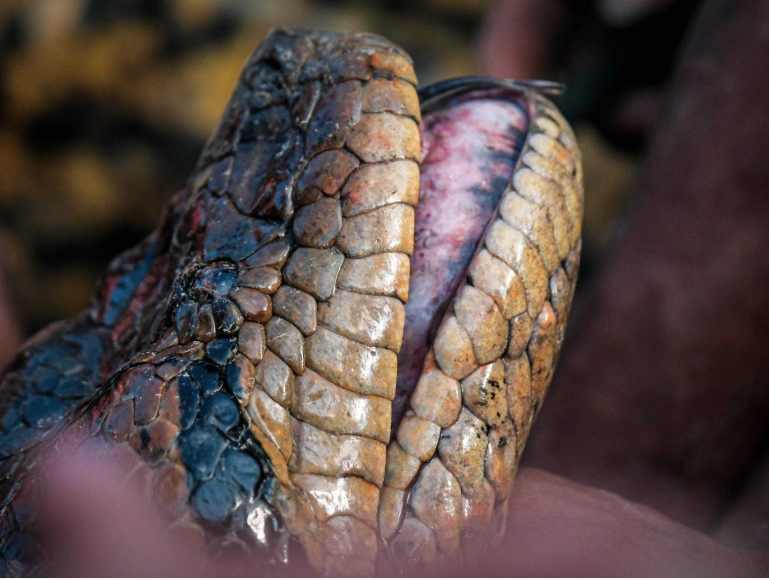The world’s largest snake was found dead in the Brazilian Amazon Rainforest just weeks after its discovery.
A team of scientists discovered the previously undocumented giant anaconda species in the Amazon during the filming of National Geographic’s Disney+ series Pole to Pole with Will Smith.
The gigantic reptile, named Ana Julia, was found five weeks ago in the Formoso River in Bonito, a rural area in the southern Brazilian state of Mato Grosso do Sul.
The northern green anaconda was about 8 meters long, weighed about 200 kilograms and had a head the same size as a human’s.
Although there are reports that the snake may have been shot, a Dutch researcher who helped discover Ana Julia emphasizes that the cause of death is still under investigation.
Professor Freek Vonk shared the news on Instagram, saying:
It is with tremendous pain in my heart that I inform you that the mighty great green anaconda I swam with was found dead in the river this weekend.
“An animal that is strong as iron, that has managed to survive, that has been swimming around Bonito for decades,” the professor added.
As far as we know, it was extremely healthy and still in the prime of its life, and would have been able to support many of its descendants for years to come. There aren’t many giant snakes of this size swimming around, so the blow to biodiversity (and to this species in particular) is enormous.
Professor Vonk said that he had previously heard reports that the snake had been shot dead, but later said that authorities had not yet found any evidence to that effect.
“The cause of death is still being investigated, considering all possible options. So it is also possible that he died of natural causes.”
“The size of these magnificent creatures was unbelievable,” Bryan Fry, a lecturer at the University of Queensland, said at the time of the discovery. One female anaconda we encountered was an astonishing 6.3 meters long.”
There are anecdotal reports from the Waorani people that there are other anacondas in the area that are over 7.5 meters long and weigh around 500 kilograms.
The new species, described in the scientific journal Diversity, diverged from the previously known southern green anaconda about 10 million years ago and is 5.5 percent genetically different from it.

